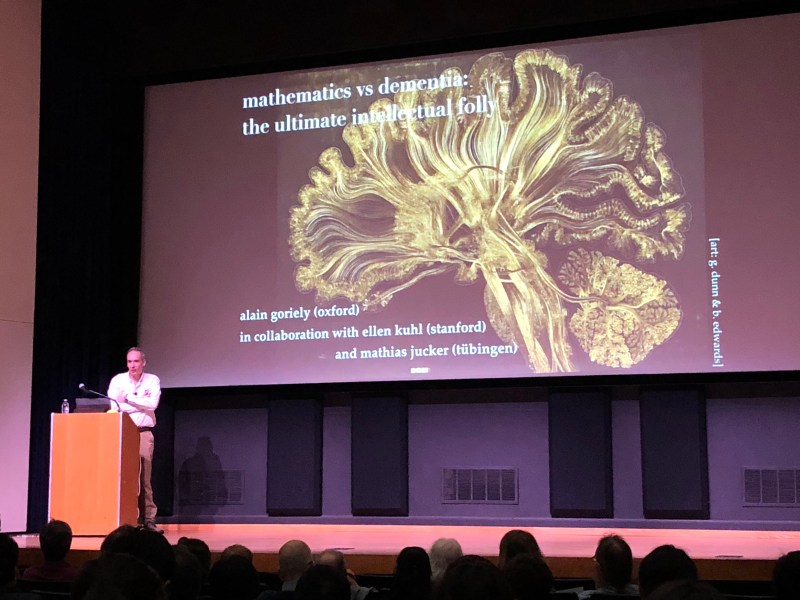Chair of mathematical modeling at Oxford University Alain Goriely discussed how mathematics could be used to better model neurodegenerative diseases in a Thursday evening presentation, part of the Stanford Math Department’s public lecture series.
During his talk, Goriely told the stories of August Deter, a woman with early onset dementia whose post-mortem brain was examined by Alois Alzheimer in 1906, and William Utermohlen, an artist who tracked his dementia and loss of identity through a series of self-portraits.
“Brains are very complex, but have an understandable structure,” Goriely said.
This paradigm, Goriely said, can also be applied to neurodegenerative diseases.
“There is something that is very systematic in the progression,” Goriely said, referring to Alzheimer’s, Parkinson’s and amyotrophic lateral sclerosis (ALS), a neurodegenerative disease characterized by the weakening of muscles and physical function. “This is something that we want to understand.”
Remarkably, the systematic progression of these diseases was leveraged by Ashish Raj, a radiology professor in residence at the University of California, San Francisco in 2012, who demonstrated that predictions of the progression of brain atrophy in Alzheimer’s from a network diffusion model had a strong correlation to clinical data. A network diffusion model is a mathematical way to predict how the disease would progress. Goriely described this process, highlighting the linear algebra involved.
However, Goriely and his team, comprised of Stanford mechanical engineering professor Ellen Kuhl and German Center for Neurodegenerative Diseases (DZNE) clinical brain research director Mathias Jucker, sought to develop a different model: one that was more closely tied to the physical properties of the “toxic” proteins that caused the disease.
The two mathematical models Goriely proposed were named after landscapes near Stanford, as Goriely thought of them while taking long walks near campus. The “Windy Hill” model makes use of the anisotropic Fisher equation, one of the “most important equations in mathematical biology,” to predict the progression of Alzheimer’s, he said. This model analyzes brain atrophy and other biomarkers. Goriely and his team used Stanford Medical Center’s MRI imaging data of the human brain to apply the “Windy Hill” model.
The second model, “The Dish Loop,” sought to take “Windy Hill” and make it faster by discretizing, a process of transforming continuous functions into discrete counterparts.
Goriely emphasized that these mathematical models could not only be superimposed on functional models of the brain to predict the effect of neurodegenerative diseases, but also used to more quickly test treatment.
Contact Sohan Vichare at svichare ‘at’ stanford.edu.
